by Lisa Cooke | Apr 9, 2013 | 01 What's New, NARA, Records & databases, Research Skills
Beware: Personal Opinions are coming your way in this article!
In my book The Genealogist’s Google Toolbox I emphasize how to use Google to determine what is already available and free online before investing your limited time and money in offline family history searching. Smart genealogists allocate their resources wisely, getting the most bang for their buck. And collaboration between individual genealogists allows us to accomplish even more.
 It looks like the U.S. Federal Government could learn a thing or two from savvy genealogists. The Washington Times is reporting that Congress’s auditor has discovered that our tax payer money given to the federal government isn’t being spent very wisely. (Imagine that!) Agencies fail to collaborate and share information, creating redundancy and overspending.
It looks like the U.S. Federal Government could learn a thing or two from savvy genealogists. The Washington Times is reporting that Congress’s auditor has discovered that our tax payer money given to the federal government isn’t being spent very wisely. (Imagine that!) Agencies fail to collaborate and share information, creating redundancy and overspending.
One example from the article: the Commerce Department “has been charging other government agencies millions of dollars for reports that the other agencies could just as easily have gotten online, for free – often with a Google search.”
This news makes it even harder to swallow the news that the National Archives and Records Administration (NARA) is suffering reduced hours of service due to budgetary issues.
The Bottom Line:
Google Twice, Pay Once (and only if you have to!)
by Diahan Southard | Mar 13, 2015 | 01 What's New, British, Canadian, Digital Archives, Records & databases
 We learn about so many fantastic new genealogy records online every week. So each Friday we round up several of them for you to glance through. Watch for databases and documents that your ancestors might appear in–but also watch for the kinds of records that may be out there already, that you haven’t yet looked for. This week: British women in World War I, Polish-American marriages, Irish vital records, Canadian travel photography, Scottish artifacts and documents and a Louisiana (US) press archive.
We learn about so many fantastic new genealogy records online every week. So each Friday we round up several of them for you to glance through. Watch for databases and documents that your ancestors might appear in–but also watch for the kinds of records that may be out there already, that you haven’t yet looked for. This week: British women in World War I, Polish-American marriages, Irish vital records, Canadian travel photography, Scottish artifacts and documents and a Louisiana (US) press archive.
WWI WOMEN. FindMyPast has posted over 9,500 UK records that illustrate the various roles played by woman during the Frist World War. These include:
POLISH-AMERICAN MARRIAGES. A new database of Polish-American marriages has been posted by the Polish Genealogical Society of Connecticut and the Northeast.
According to a press release, “This database contains the names of couples of Polish origin who were married in select locations in the Northeast United States. The information was taken from marriage records, newspaper marriage announcements, town reports, parish histories or information submitted by Society members. The time period generally covered by these lists is 1892-1940. It includes the States of Delaware, Massachusetts, New Hampshire, New Jersey, Rhode Island and Vermont. Connecticut and Jersey City, NJ will be added at a later date.”
IRISH BMD. Over a million records appear in a new database of Irish records of the city and county of Derry~Londonderry and Inishowen, County Donegal. Entries span 1642-1922 and include:
- Pre-1922 civil birth and marriage registers,
- Early baptismal and marriage registers of 97 churches,
- Headstone inscriptions from 118 graveyards, and
- Census returns and census substitutes from 1663 to 1901.
Click here to access these records (and other County Derry resources) at RootsIreland,ie (subscription required).
CANADIAN TRAVEL PHOTOGRAPHY. A small but visually rich collection of pictures promoting Canadian tourism is now at Flickr Creative Commons. Use these to explore places your ancestors may have visited (and the images that may have lured them there) if they vacationed by rail in the 1800s or early 1900s. (Click here to learn more about finding great historical photos at Flickr Creative Commons.)
SCOTTISH ARTIFACTS AND DOCUMENTS. A new digital archive at Historic Scotland has launched an online database of 400 artefacts now includes over 400 artifacts important to Scottish history. Everyday household objects, ship models, coins, weaponry, bits ‘n bobs of old homes and buildings, industrial machinery and miscellaneous photos, books and ephemera are all browsable on this site. It’s a great place to look for images that help illustrate your Scottish ancestors’ history.
LOUISIANA PRESS COVERAGE. The Louisiana Digital Media Archive has launched as “the first project in the nation to combine the media collections of a public broadcaster and a state archives,” according to its site description. “This ever-expanding site contains a combined catalog of thousands of hours of media recorded over the past half-century. You can see interviews with Louisiana civil rights pioneers, notable political figures, war heroes, artists and literary icons. You’ll have a front row seat to Louisiana history through video of historic events. You can also visit remote and endangered Louisiana places and cultures.”
 Not sure how to find record sets like these for YOUR family history? Here’s a tip! Set up a Google Alert. Say you want to know whenever new material on Polish-Americans in Detroit is found by Google’s ever-searching search engines. Click here to learn how to set up this search (or any other) Google Alert for genealogy.
Not sure how to find record sets like these for YOUR family history? Here’s a tip! Set up a Google Alert. Say you want to know whenever new material on Polish-Americans in Detroit is found by Google’s ever-searching search engines. Click here to learn how to set up this search (or any other) Google Alert for genealogy.
This tip comes to you courtesy of the book The Genealogist’s Google Toolbox, Second Edition by Lisa Louise Cooke–the fully-revised 2015 edition that’s packed with strategies that will dramatically improve your ability to find your family history online.
by Lisa Cooke | Nov 11, 2015
Here are the reasons every family historian should be writing a family history blog–and how can you get started NOW.
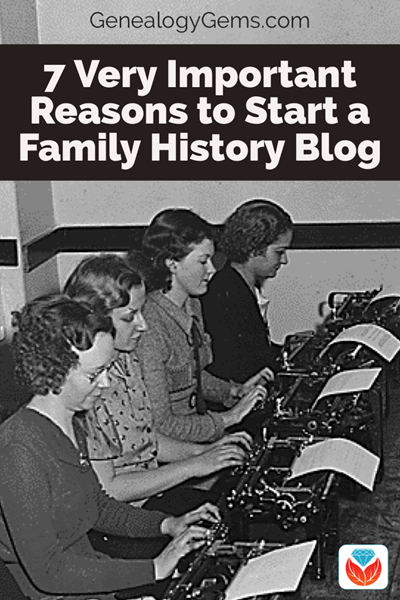
Why Start a Family History Blog
Many of us want to write up our family stories, but with busy schedules, a 300-page book may not be in our future!
You don’t have to have a lot of time to write and share your family history. Blogging about family history is a perfect alternative. Blogs are just simple websites that present articles in chronological order beginning with the most recent. This is a great format for telling a story that travels through time.
Blogs also allow your readers to “subscribe” for free much like a podcast. In other words, your readers don’t have to remember to visit your blog and read the latest. Instead, they can receive email prompts when you publish new articles, or they can receive those new articles alongside their other favorite blogs and podcasts in a blog reader. Very convenient indeed!
Still not convinced it’s possible to start your own genealogy-themed blog? Here are 7 reasons why and how you can start a family history blog.
1. You can write a little bit at a time.
You don’t have to fill hundreds of pages or lay out an entire book. With a blog you can write as little as a paragraph at a time. There are no rules because it is your blog!
Over time, even a one-paragraph blog post, once a week, will eventually result in many pages. It’s a great way to pace yourself and still get your family’s story in writing.
2. Every word you write is searchable by Google.
Gone are the days of simply posting a query on a genealogy message board that only reaches genealogists.
By blogging about your family history, other people who are researching the same family lines can find and connect with you through their Google searches. You’ll be writing about the family they are searching for, so you’ll very likely be using many of the same keywords, dates and information that they will include in their search query. This means your blog should pop up high on their Google search results list!
Think of your family history blog as your own big message board. Your posts can be found by anyone in the world searching for the same information. The connection possibilities are endless. So essentially, family history blogs are your way to “fish for cousins.” This of it as “cousin bait!”
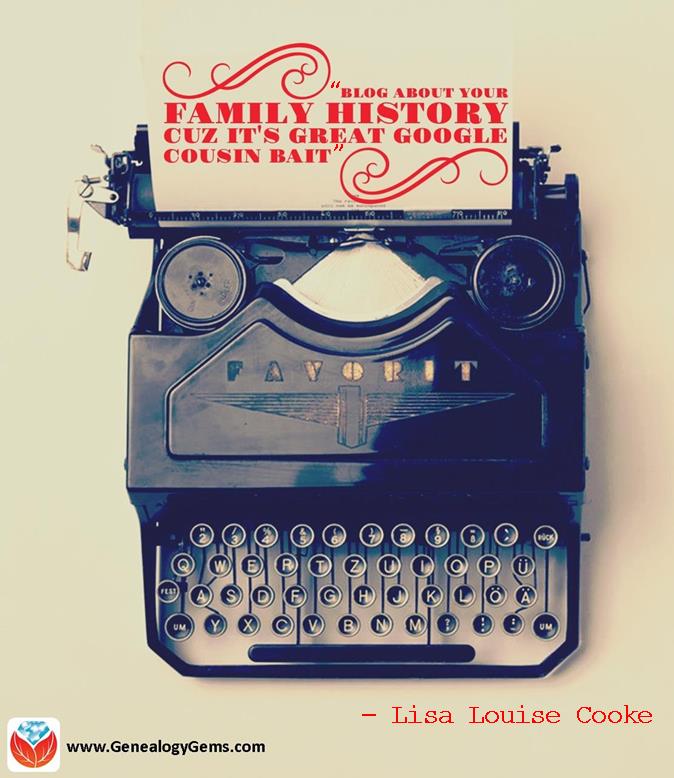
Blogs typically include a Comment section at the end of each of your articles, so encourage visitors to your blog to leave comments. Don’t worry, you can set your blog to only show the comments after you have reviewed and approved them.
3. You might bust your toughest brick wall.
I’ve heard and shared countless success stories here at Genealogy Gems from readers and listeners. By just “putting it out there” on a blog they have opened the door to a distant relative contacting them with a treasure trove of new information about their family tree.
“Your encouragement to blog genealogy has given me courage and a vehicle for which I can share the stories of our family’s common history. So, over the past month I’ve been posting digital images of each day (from my great grandfather’s) journal from 50 years ago, the transcription of the journal and an historical image that gives context to what he was writing about. I plan to include family photos and other documents as I expand this blog.”
– Chris C.
4. You’re more likely to spot your mistakes and missing links.
Have you ever told a story out loud and discovered in telling it that something in the story didn’t quite jive? A blog can help you tell your family’s story “out loud” too.
The process of writing up your family history discoveries can often reveal gaps, errors, or bad assumptions in your research. And that’s a good thing! Use it to your advantage to identify further research that needs to be done. But those items on your research to do list.
And don’t be afraid to let your reader know what your gaps are and where you’re stuck. They just might be able to help!
5. Your kids, grandkids, nieces and nephews, etc. are online.
Your descendants probably prefer to read quick and easy stories on-the-go on their smart phones and tablets, and a blog fits the bill perfectly.
Putting your research on a blog provides your relatives with an easy way to digest the family heritage. And of course they can subscribe to it, since blogs can be delivered to their email inbox or to a blog reader like Feedly.
Blog posts are also super easy to share to Facebook, which means your post can get even more traction.
Chris continues:
“The family response has been amazing. The cousins, siblings, aunts and uncles think it is cool and want to see more! They love the stories and can’t wait for subsequent postings so they can hear detailed history about (him) that they never knew about.
I believe this blog will be part of how our family begins healing and comes back together again.”
6. Because there are no excuses.
You can start a blog for free, so cost is not a barrier.
There are no rules, so you can decide how often and how much you write at once.
There is just one thing you have to do to successfully blog about your family history: begin.
7. Because your blog continues to share even when you aren’t researching.
The best news of all is that your family history blog will be out there working online for you 24 hours a day, 7 days a week.
Even when life gets in the way and you need to take a sabbatical from blogging and genealogy, your blog is still out there ready to be found. You will still be sharing your family’s story, and attracting relatives to it. And when you’re ready, your blog will be ready for you to add the next chapter.
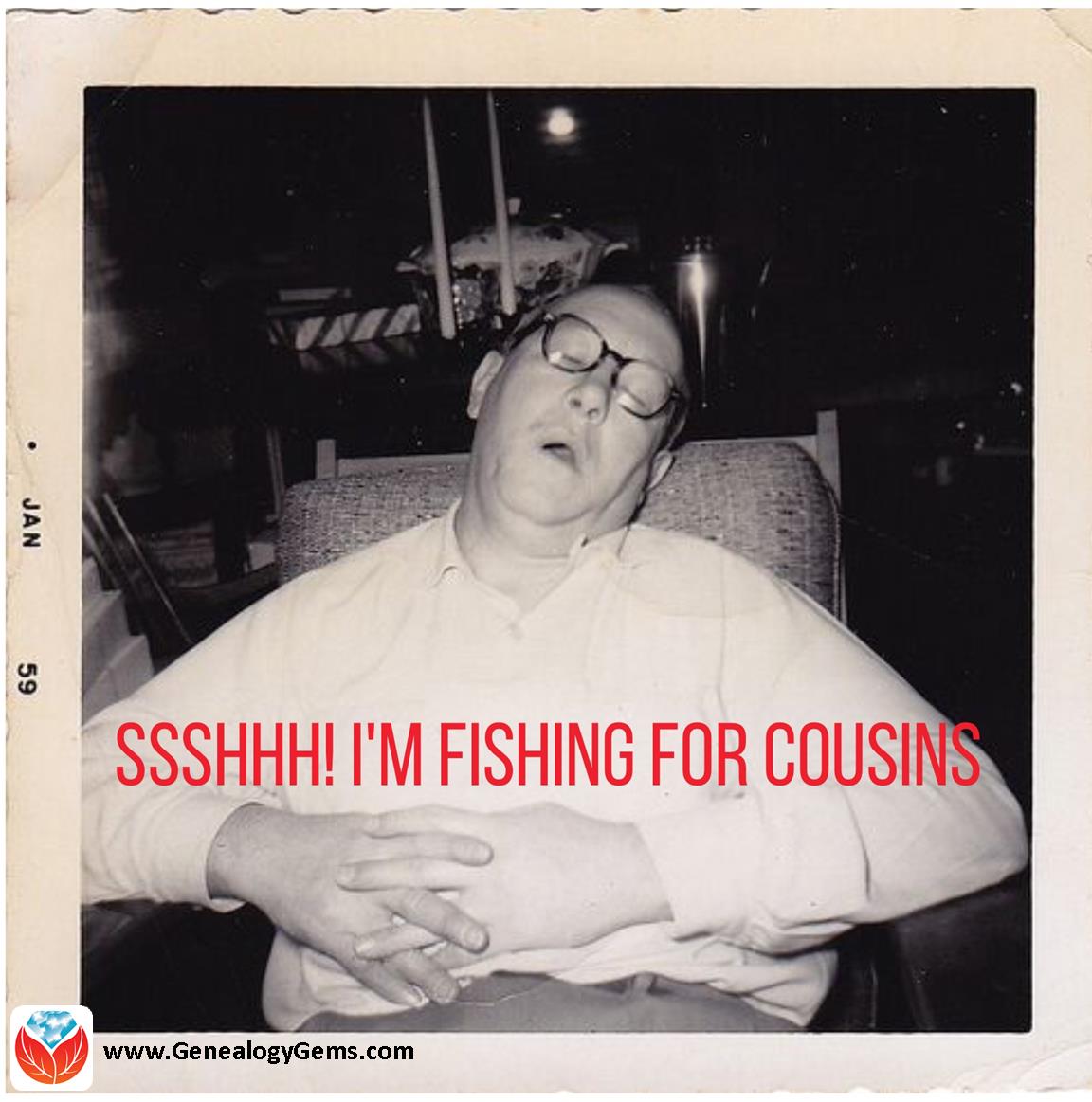
How to Start a Family History Blog
Starting a family history blog isn’t hard. But some people find it intimidating. So I’ve created two entire series to help you get started.
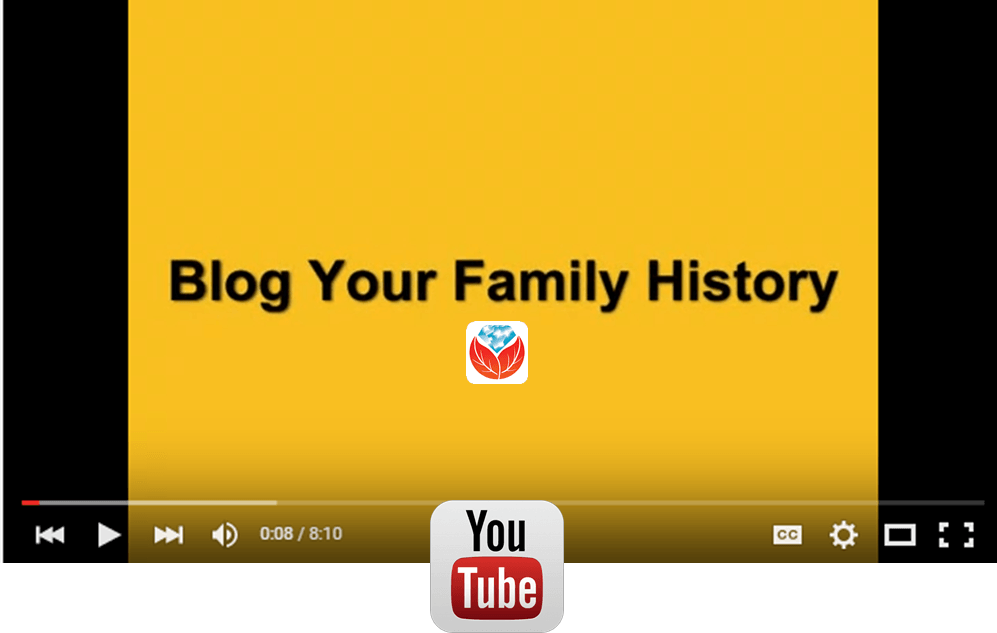 Click to watch this free series of videos on the Genealogy Gems YouTube channel These videos show you how to set up a family history blog. They are a few years old, but will give you the basic idea. You’ll see how to get started for free in Blogger, with your Google account.
Click to watch this free series of videos on the Genealogy Gems YouTube channel These videos show you how to set up a family history blog. They are a few years old, but will give you the basic idea. You’ll see how to get started for free in Blogger, with your Google account.
(I use WordPress for my website and my blog. They have a free version at wordpress.com.) Need more encouragement? Click here to hear from other readers who are very glad they got started.
Learn More About Blogging on the Family History Podcast
 Click to listen to a free series from our Family History: Genealogy Made Easy podcast(an online radio show).
Click to listen to a free series from our Family History: Genealogy Made Easy podcast(an online radio show).
Starting with episode 38, you’ll learn:
The “Footnote Maven,” author of two popular blogs, talks about the process of starting a genealogy blog. She gives great tips for thinking up your own approach, finding a unique niche, tips for getting people to comment on your blog posts and more.
We hear from two additional popular genealogy bloggers, Denise Levenick (author of The Family Curator and alter ego of “Miss Penny Dreadful” on the Shades of the Departed blog) and Schelly Tallalay Dardashti (author of the Tracing the Tribe blog).
How to create your own free family history blog on Blogger.com. Learn tricks for designing a simple, useful blog and how NOT to overdo it!
In this concluding episode, learn how to add a few more gadgets and details to your blog; pre-plan your blog posts, publish your first article, and how to help your readers subscribe. You’ll also get great tips on how to create genealogy content that others looking for the same ancestors can find easily online.
Share the Blogging Adventure!
 Invite someone you know to start a family history blog of their own. Send them a link to this webpage or share it through social media. They’ll thank you for it later!
Invite someone you know to start a family history blog of their own. Send them a link to this webpage or share it through social media. They’ll thank you for it later!
And if you have started a family history blog, please comment below and share your experience.
by Lisa Cooke | Nov 15, 2015 | 01 What's New, Ancestry, Blogs, DNA
 We are celebrating our 1000th Genealogy Gems blog post with a list of our Top 10 Posts. Share this post on Facebook and you could win an inspiring family history writing video!
We are celebrating our 1000th Genealogy Gems blog post with a list of our Top 10 Posts. Share this post on Facebook and you could win an inspiring family history writing video!
I can hardly believe it. This month, the Genealogy Gems website will reach a milestone 1000 blog posts! Thank YOU for your emails, phone calls and comments at conferences. I often share your success stories and use your feedback to bring you more great content.
Below is a list of our most-read posts so far. Did you miss any? Keep reading to learn how to win a a great family history writing prize by sharing this post on Facebook!
Our Top 10 Blog Posts
1. Ancestry Up for Sale? By far the most-read post in 2015! We weren’t just talking about the sale rumor, but sharing advice on saving your Ancestry trees, sources and DNA, which everyone should do.
2. Best Genealogy Software: Which You Should Choose and Why. This is my spiel on why you should keep your master family tree on software at home–not on your favorite genealogy website. It includes my top picks for family tree software, including free options.
3. Four Fabulous Ways to Use the Library of Congress for Genealogy. A lot of you are interested in the Library of Congress’ online resources for digitized photos, newspapers and how-tos for archiving your family history. Read all about it!
4. Free Google Earth for Genealogy Class. The conference lectures I give on Google Earth for genealogy are so popular that I created a free video that everyone can watch from home. Click on the post, and you can watch the video, too.
5. AncestryDNA Review and Breaking News: Updates Launched. Our own DNA correspondent Diahan Southard penned this popular post on AncestryDNA’s ground-breaking integration of our genetics data and our genealogy trees.
6. Seven Free Google Searches Every Genealogist Should Use. Are you getting the most out of free Google search technologies? Scan this list and see what’s missing from your search strategies!
7. NEW! Try This Now! U.S. Social Security Applications and Claims Index. For U.S. researchers, this was the blockbuster database of summer 2015. Millions of parents’ names, birthplaces and more now beef up this go-to Social Security database–its’ far better than its sparse predecessor, the SSDI.
8. Confused by Your AncestryDNA Matches? Read This Post. Another hit from DNA expert Diahan Southard! A great explanation of how to use your New Ancestor Discoveries on AncestryDNA.
9. How are We Related? Use a Cousin Calculator. It’s a simple, easy online tool, shared in response to a listener’s question.
10. New AncestryDNA Common Matches Tool: Love it! Diahan reports on a fabulous online tool that pulls out shared genetic matches between two people at AncestryDNA.
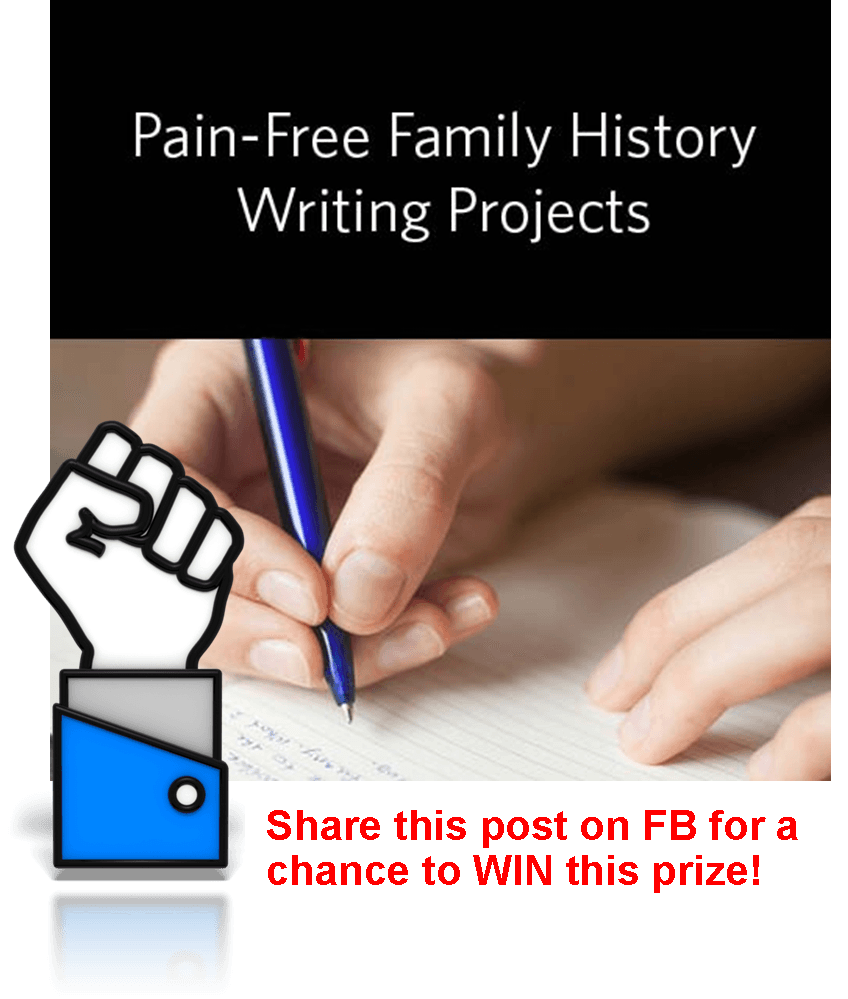 Will you please share this post on your Facebook timeline to help me spread the word about the “gems” you can find on the Genealogy Gems blog?
Will you please share this post on your Facebook timeline to help me spread the word about the “gems” you can find on the Genealogy Gems blog?
Here’s a little extra incentive: Use the hashtag #genealogygems and SHARE THIS POST ON YOUR FACEBOOK PAGE BY FRIDAY (November 20, 2015), and you’ll be entered in a contest to win the Pain Free Family History Writing Project video course download. It’s presented by Gems Contributing Editor Sunny Morton and donated by our friends at Family Tree University. Of course you’re welcome to add any comments on your “shared” post, like which Genealogy Gems blog post has most inspired you or helped your research. That feedback helps us bring you more posts you’ll love.
 Ready, set, SHARE! And thank YOU for helping me celebrate our 1000th blog post here at Genealogy Gems.
Ready, set, SHARE! And thank YOU for helping me celebrate our 1000th blog post here at Genealogy Gems.
by Lisa Cooke | Dec 21, 2015 | 01 What's New, Holidays, Inspiration, Listeners & Readers, Writing Family History
 Why not share the gift of family history story in this year’s Christmas letter or holiday cards?
Why not share the gift of family history story in this year’s Christmas letter or holiday cards?
Genealogy Gems podcast listener Catherine just sent in this fantastic idea about including family history in her annual Christmas letter. I thought I’d share it while it can inspire those whose holiday cards or letters are still on their “to-do” list. (Already done? Think about it for next year!) Here’s what she wrote:
“I’ve always been intimidated by the idea of writing [family history]: where to begin, what to write about, what to include, how to say it. When it was time to sit down and write the family Christmas letter and not having much to report, it struck me. Why not write a family history letter to the cousins about our common maternal Grandfather?
It may not be an original idea but it was new to me, so, deep breath, I took the plunge and the result was a letter that I truly enjoyed writing. I included some fun facts from immigration records and census information, family pictures, a couple of stories and even Google Earth pictures from my Gramp’s birthplace in ‘the Old Country.’ I sourced the letter and added webpage links in case I hooked someone into wanting to know more.”
Thank you Lisa for speaking about Google Earth Pro and my new best friend, Evernote for Genealogy! I can’t wait to see what the family reaction will be. I’m planning some follow up letters and may even go for the big one (gulp)–a blog! I was so inspired I even made two of your wreaths, one for my mother-in-law and one for my best friend, also a genealogy junkie.”
Wow, I love to see how Catherine has taken what I’ve been teaching–from keeping track of sources in Evernote to making wreaths–and RUNNING with it! She says, “Thanks for the great ideas, inspiration and support,” but I want to thank HER for writing in with her enthusiasm and clever ideas. I LOVE the idea of adding the gift of family history–complete with crowd-pleasing Google Earth pictures and proper citations–to your annual Christmas letter. That’s on MY list for next year!
Take These Ideas and Run with Them Yourself with These Helpful How-Tos:
 Using Google Earth for Genealogy
Using Google Earth for Genealogy
Using Evernote for Genealogy
How to Start a Family History Blog
 It looks like the U.S. Federal Government could learn a thing or two from savvy genealogists. The Washington Times is reporting that Congress’s auditor has discovered that our tax payer money given to the federal government isn’t being spent very wisely. (Imagine that!) Agencies fail to collaborate and share information, creating redundancy and overspending.
It looks like the U.S. Federal Government could learn a thing or two from savvy genealogists. The Washington Times is reporting that Congress’s auditor has discovered that our tax payer money given to the federal government isn’t being spent very wisely. (Imagine that!) Agencies fail to collaborate and share information, creating redundancy and overspending.






 Click to listen to a free series from our Family History: Genealogy Made Easy podcast
Click to listen to a free series from our Family History: Genealogy Made Easy podcast


 Why not share the gift of family history story in this year’s Christmas letter or holiday cards?
Why not share the gift of family history story in this year’s Christmas letter or holiday cards?